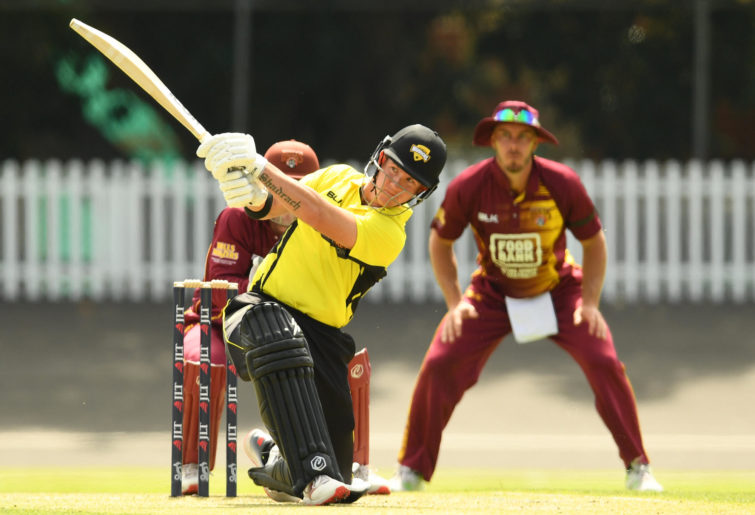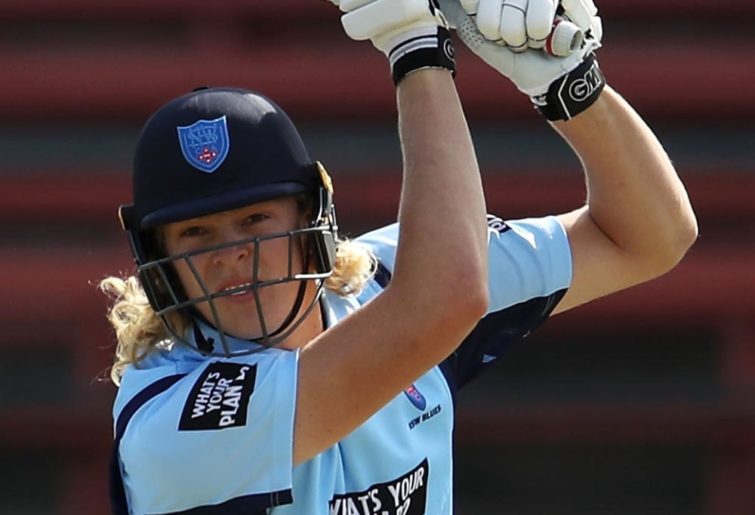WATCH: Freddy Flintoff's son dominates County 2nds game batting exactly like his dad
Check out some of the short-arm pull shots from Rocky Flintoff!
The newly named Marsh Cup commences on September 21 amidst a wave of positive changes to the domestic cricket schedule.
The early start again launches the home season, this time with a vastly different layout. A tournament prone to changes in structure and scheduling may have been tweaked for the better.
From split innings, being confined to one or just a handful of states, to the integration of the CA XI, this competition has been tinkered to exhaustion. In 2019, we see it return to key venues absent from the action for several seasons.
The MCG and SCG will feature two and one matches respectively, of a total 21 followed by the final. Even the Gabba will see some cricket.
One question to pose is whether as many remarkably high totals are posted compared to recent seasons, with less cricket played on the smaller, boutique suburban venues. The season also runs at the same time as the Sheffield Shield and runs later than it has in recent years.
Plenty of marquee international players could be on show. Australia’s Ashes participants will not feature in the first two matches for their side. Victorious teams historically have featured heavy input from national stars. In recent years, a Steve Smith-Mitch Starc combination, the Marsh brothers, or a trio of Aaron Finch, Glenn Maxwell and Peter Handscomb have launched their respective outfits to a title.
The television coverage adds another layer of exposure, even if only 13 matches will be shown on Fox Cricket, with the remaining games pushed aside to web streaming.
Last summer, an imperious domestic season for Victorians began with a triumph over Tasmania in the Junction Oval final. Western Australia won all five round-robin matches but fell an unfortunate victim to the bizarre finals method.
There were some huge individual innings. D’Arcy Short amassed the highest ever List-A score in Australia with 257, while Jake Weatherald and Ben McDermott highlighted their incredible talents.

(AAP Image/Dean Lewins)
Cameron White, Callum Ferguson and Moises Henriques turned back the clock as Chris Lynn and Glenn Maxwell regularly did what they do best. In a tournament ruled by pace over spin, Gurinder Sandhu grabbed a hat trick amongst seven wickets in the final, although 274 from Victoria was enough.
Looking to what lies ahead and the competition will be worse for the absence of Chris Lynn, as he searches for lucrative foreign offerings. His Queensland unit still holds plenty of international quality – the top order is expected to include names like Usman Khawaja, Joe Burns, Matt Renshaw and Marnus Labuschagne.
The power of Lynn will be missed though, having smoked 27 sixes last season. Youngster Sam Heazlett was the fourth highest run-getter last year, determined to be remembered for more than just a random ODI appearance.
Like Tasmania and others, the Bulls appear a strong candidate to fly under the radar. Queensland have clinched this title twice in the past decade, with no team having done so more. Victoria, Western Australia and New South Wales have also claimed two wins across this period.
This tournament never makes picking a favourite easy. Expect Victorian success, headlined by World Cup duo Aaron Finch and Glenn Maxwell, alongside Peter Handscomb, who takes the captaincy and possibly the gloves. Fans have been given a taste of the young talent on offer in Victoria – most notably through the BBL – and Sam Harper, Mackenzie Harvey and Will Sutherland all feature in this squad. At the other end of the spectrum, Victorian stalwart Cameron White is without a state contract in a decision pointing to the future.
Plenty of old-stagers will do the rounds again, though. George Bailey clings on as the glue in a powerful Tasmanian batting order. The domestic form of Matthew Wade in recent times is well known, and 2018 player of the tournament Ben McDermott should again be an asset to this side. The Tigers possess an underrated bowling unit, which last season contained four of the top dozen wicket-takers. With Wade and Tim Paine unavailable early, Jordan Silk assumes the captaincy.
Then there is New South Wales. A typical XI for the Blues has been quite strong over the last few seasons, even if results have not materialised. This is without adding key components that currently make up half of Australia’s Ashes cohort. We are unlikely to see much of the Blues’ major weapons though, so this will be a test of whether a mix of young and old can challenge.

(Mark Kolbe/Getty Images)
Plenty of youthful exuberance in the Edwards brothers Jack and Mickey, gloveman Matthew Gilkes and Arjun Nair – who has been on this stage before – may generate excitement but perhaps without the class to go all the way. Expectation could fall on the steady, experienced heads in the side – Moises Henriques, Peter Nevill, Sean Abbott and reliable left-handed duo Kurtis Patterson and Daniel Hughes.
Many have fled the Perth scene in the BBL, yet the Warriors maintain a strong squad. Sheer pace and a wealth of all-round options make them dangerous. Not shy of good form in the One-Day Cup, this team are as strong a chance as any. Shaun Marsh should slot in at the top of the order, while his younger brother Mitch and fellow Ashes squad member Cameron Bancroft may be on show thereafter.
For the Redbacks, chasing their first title since 2011, the batting nucleus is firm once again. Who could forget the sudden batting blitz from Alex Carey in the World Cup, or the previous exploits of Callum Ferguson and Travis Head in this tournament.
These three alongside 32-year-old Tom Cooper form an ideal blend of class and promise. Head is set to rest through the opening matches, so Jake Lehmann takes charge.
Known swing operator Daniel Worrall is an unfortunate absentee, however following superb domestic form last season, Kane Richardson leads a reliable attack. Bowling all-rounder Cameron Valente has fond memories of this competition, having crunched two centuries in seasons prior.
Lastly, the whispers of talented all-rounder Luke Robins continue, making him one to watch.